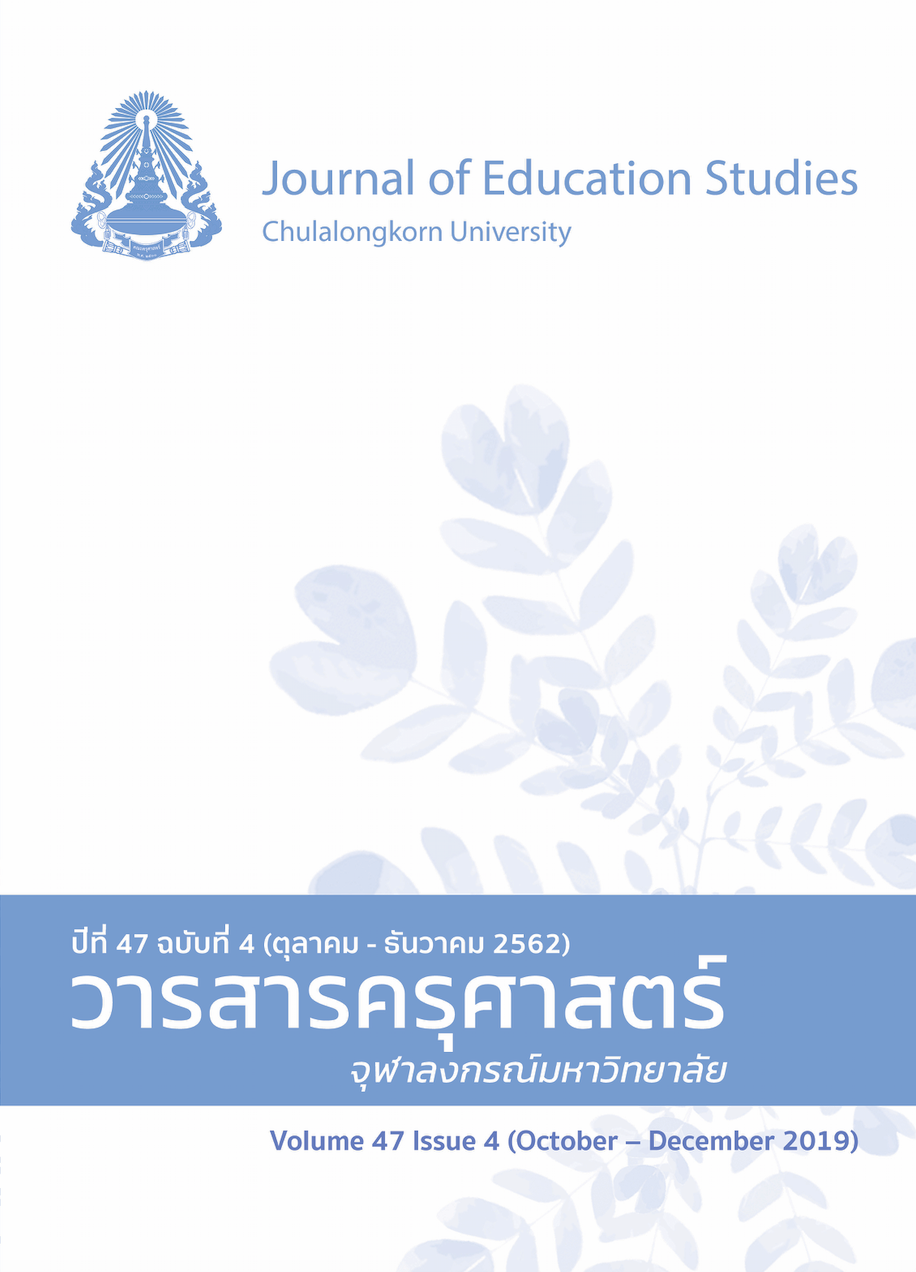A Visualization System using Positive Reinforcement Theory to Develop Problem-Solving Skills and Self-Esteem in Young College-Educated Farmers
Keywords:
VISUALIZATION, SYSTEM, POSITIVE REINFORCEMENT, PROBLEM-SOLVING SKILLS, SELF-ESTEEM, YOUNG COLLEGE-EDUCATED FARMERSAbstract
This paper proposes a technique called the Visualization System using Positive Reinforcement Theory (VSPR) to develop problem-solving skills and self-esteem in young college-educated farmers. The research comprised four major steps (1) interviews with 10 faculty members from university Agricultural departments to identify current problems in the classroom, as well as 432 undergraduate students from Agricultural departments in order to generate opinions, suggestions and requirements with regard to development of VSPR software, (2) development of VSRP prototype software, (3) testing VSRP prototype software with undergraduate students from university Agricultural departments, and (4) interviews with experts in order to solicit opinions and suggestions about VSPR and the prototype software. The resulting VSPR prototype software consists of four elements: (1) system structure, (2) content, (3) visualization technique, and (4) evaluation, as well as four steps: (1) suggestions, (2) presentation of problem scenario, (3) problem-solving activities and (4) summary. The t-test results of the VSPR prototype software showed significant improvement with regard to problem-solving skills and self-esteem in undergraduate students from university Agricultural departments at 0.01 and 0.01 consecutively.
References
Center for Applied Economics Research, Kasetsart University. (2011). Research on the impact of agricultural demographic change on food security in Thai agricultural sector. TRF Policy Brief, 2(4), 1-8. Retrieved from http://prp.trf.or.th/trf-policy-brief/page/10/
Coopersmith, S. (1981). Self-Esteem inventory. California: Consulting Psychologists Press.
Diehl, S. (2007). Software visualization: Visualizing the structure, behavior and evolution of software. New York: Springer.
Jantra, K. (2013). Effects of organizing problem-based learning activities in social studies subject on problem solving abilities (Unpublished Master’s Thesis). Chulalongkorn University, Bangkok.
Kazdin, A. E. (1977). The token economy: A review and evaluation. New York: Springer.
Keim, D. A. (2002). Information visualization and visual data mining. IEEE Transactions on Visualization and Computer Graphics, 7(1), 101-105.
Lackney, F. A. (2002). 12 design principles based on brain-based learning research. Retrieved from http://itari.in/categories/brainbasedlearning/DesignPrinciplesofBrainBasedLearning.pdf
Malithong, K. (2000). Educational technology and innovation. Bangkok: Aroon Printing.
Office of Agricultural Economics. (2011). The eleventh national economic and social development plan (2012-2016). Retrieved from http://www.oae.go.th/download/
document_plan/planAgi11_Sep55.pdf
Rungratthawatchai, P (2011). Thailand will be soon facing crisis of farmer shortage Thailand facing crisis of farmer shortage. Retrieved from http://info.gotomanager.com/news/details.aspx?id=93300
Potter, A. (1998). Putting the positive thinker to work: 21 ways 21 days to a happy, fulfilling, successful life. New York: Berkley Books.
Sittibanjerd, A. (2009). The applied visualization technique for knowledge management system (Unpublished Master’s Thesis). Bangkok University, Bangkok.
Skinner, B. F. (1971). Beyond freedom and dignity. New York: Knopf.
Songkram, N. (2010). Development of a problem-based learning model using hypermedia-based cognitive tools to enhance problem-solving ability of undergraduate agriculture students. (Unpublished Doctoral Dissertation). Chulalongkorn University, Bangkok.
Tanner, D., & Tanner, L. (1975). Curriculum development: Theory into practice. New York: Macmillan.
Tonsri, K. (2013). Labor and changes of Thai agriculture. Retrieved from https://www.bot.or.th/Thai/MonetaryPolicy/NorthEastern/DocLib_Research/04-Labor%20with%20Agri%20Changing.pdf
Walz, G. R., & Bleuer, J. C. (1992). Student self–esteem: A vital element of school success. Michigan: Counseling and Personal Services.
Ware, C. (2004). Information visualization: Perception for design: Second edition. Retrieved from https://www.researchgate.net/publication/224285723_Information_Visualization_Perception_for_Design_Second_Edition




